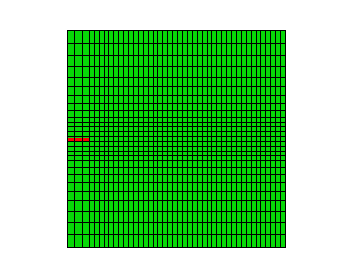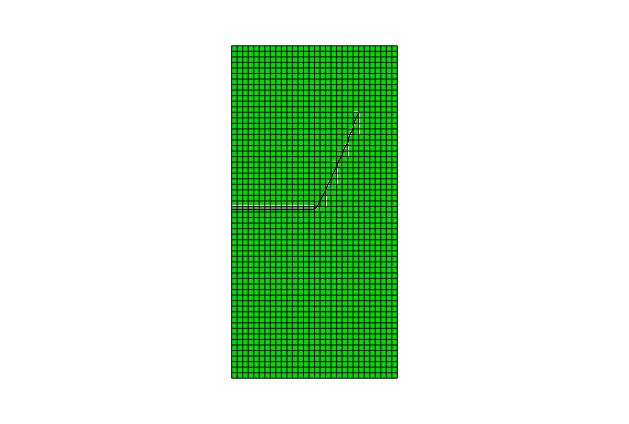Problem description
Two single-edge notch specimens are studied. The first specimen is shown in Figure 1 and has a length of 3 m, a thickness of 1 m, a width of 3 m, and an initial crack length of 0.3 m, loaded under pure Mode I loading. Equal and opposite displacements are applied at both ends in the longitudinal direction. The maximum displacement value is set equal to 0.001 m. In the low-cycle fatigue analysis, a cyclic displacement loading with a peak value of 8 × 10−5 m is specified. The second specimen has a length of 6 m, a thickness of 1 m, a width of 3 m, and an initial crack length of 1.5 m, loaded under pure Mode II or mixed-mode loading. Equal and opposite displacements are applied at both ends in the width direction under pure Mode II loading, while equal and opposite displacements are applied at both ends in both the longitudinal and width directions under mixed-mode loading. The maximum displacement value is set equal to 0.01 m. In the low-cycle fatigue analysis, a cyclic displacement loading with a peak value of 8 × 10−4 m is specified.
The material data for the bulk material properties in the enriched elements are GPa and .
The response of cohesive behavior in the enriched elements in the model is specified. The maximum principal stress failure criterion is selected for damage initiation; and a mixed-mode, energy-based damage evolution law based on a power law criterion is selected for damage propagation. The relevant material data are as follows: MPa, × 103 N/m, × 103 N/m, 42.2× 103 N/m, and . The relevant material data defined above are also used in the model simulated using the XFEM-based LEFM approach.
When the fatigue crack growth analysis is performed, the additional relevant data for the fracture energy release rate–based Paris law are as follows: , , × 10−6, , , and . When the stress intensity factor–based Paris law is used, the equivalent constants are × 10−19, .


